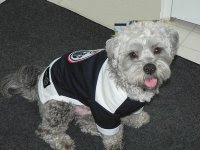Course Description:
Freaks and Geeks: Literary Insiders and Social Outsiders in Contemporary Fiction
“Geek: 1. A person, a fellow, esp. one who is regarded as foolish, offensive, worthless, etc. 2. A performer at a carnival or circus whose show consists of bizarre or grotesque acts, such as biting the head off a live animal” (Oxford English Dictionary).
“We live at a moment when the name “Freaks” is being rejected by the kinds of physiologically deviant humans to whom it has traditionally been applied…To them it seems a badge of shame, a reminder of their long exclusion and exploitation by other humans, who defining them thus have by the same token defined themselves as “‘normal’” (Leslie Fiedler, Freaks 13).
In this course we will discuss the ownership and rejection of the stereotypes that define “freaks and geeks.” The characters in the novels we will study are all considered “freaks” by conventional social standards. But what characterizes humanity, and who determines this characterization? From the Binewskis carnival family in Geek Love to the “dark and stormy night” that begins the award-winning tale of A Wrinkle in Time, we will examine how the novels under study are symbolic funhouses that make so-called “normal” people seem bland and bordered. But why have these authors chosen malformed figures as protagonists? Beyond their creative edge, do the physical deformities reflect social oppression? Do they make a statement on society’s tendency to showcase deformity and beauty as physical portrayals of what belongs, and what does not belong, to the “natural” human order? In addition, how do these misshapen bodies argue for the deformation of traditional literary canons and cultural icons? To answer these questions, we will approach the texts under a theoretical lens that employs theories of the body, the gaze, the grotesque, and the Carnivalesque.
Course Objectives:
On completion of this course, students should be able to:
- determine how social attitudes have shaped perceptions of “freaks” in literature, culture, and society.
- investigate how the boundaries of the body are redefined by “freaks and geeks,” and how marginal figures shift the canonical centre.
- engage in a critical discussion on the required texts and topics.
- write a critical analysis on the required text(s), and to support the thesis with relevant research and astute close reading skills.
- appreciate how literary studies contributes to critical thinking beyond the classroom.
Texts and Readings:
Pre-Session Study
Read: Katherine Dunn’s Geek Love.
Note: We will conduct close readings of the text in class. You are not required to use the edition purchased by the bookstore, but it will be easier to discuss the text as a group if we’re all on the same page.
Students are advised to read as many of the literary works as possible before the beginning of term. You might start to consider some of the interrelated issues evident in the works. Articles related to the texts, and considered required reading for class discussion, will be made available on Blackboard.
The other novels we will study include:
Angela Carter Nights at the Circus (Vintage Classics)
Kazuo Ishiguro Never Let Me Go (Vintage Canada)
Madeleine L’Engle A Wrinkle in Time (Square Fish)
We will also watch the following during class:
Tod Browning’s Freaks
Selections from contemporary culture’s revision of geeks and the popularity of “the freak show” (for example: Freaks and Geeks, Glee, Star Trek, Michael Jackson, etc).
